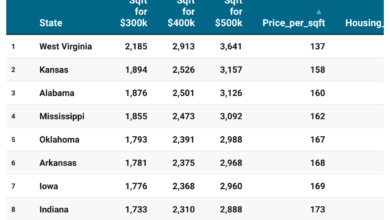How Much Households Pay in Property-Related Taxes Across Major Australian Cities

Owning a home in Australia involves more than mortgages. Council rates, stamp duty, and land tax shape household budgets differently across cities in 2025.
For many Australians, housing costs don’t stop at the mortgage. Beyond the price of the home itself, there are ongoing and upfront taxes that can have a huge impact on a household’s budget. These include council rates, stamp duty, and in some cases, land tax. Together, these form an important part of the hidden cost of homeownership.
While federal income tax applies equally across the nation, property-related taxes are set by state and local governments. This means the amount you pay can vary significantly depending on which city — and which state or territory — you live in. Sydney homeowners face a very different tax landscape compared to those in Hobart or Darwin, and Canberra operates under a unique system that sets it apart from the rest of the country.
This article takes a closer look at the major Australian capital cities, comparing three key household tax factors:
- Annual council rates – a recurring cost similar to property taxes in the U.S.
- Stamp duty – a one-off tax on property purchases.
- Land tax rules – whether the main residence is taxed annually beyond council rates.
Comparing the Cities
Taken together, the numbers paint a picture of significant regional differences in household tax burdens. Sydney buyers face the steepest upfront cost thanks to massive stamp duty bills, while Melbourne and Brisbane strike a balance of high purchase taxes with moderate annual rates. Adelaide and Perth are slightly cheaper both upfront and ongoing, though still substantial compared to smaller capitals.
Canberra’s system is unique, with households paying thousands more each year in rates but avoiding separate land tax obligations. Meanwhile, Hobart and Darwin stand out for their relative affordability, both in terms of entry costs and ongoing expenses, making them attractive for households seeking lower-tax environments.
The Ongoing Cost: Council Rates
Council rates are the closest equivalent Australia has to a property tax. They are charged annually and collected by local governments to fund services like waste collection, road maintenance, libraries, and community facilities. The rates are usually based on a property’s land value or a notional valuation method, meaning more expensive suburbs tend to attract higher bills.
Sydney homeowners typically pay between $1,300 and $1,500, though councils in wealthier areas like Ku-ring-gai can exceed this. Melbourne’s rates are in a similar range, from $1,400 to $2,100, though they often include additional charges such as waste levies. Brisbane, home to Australia’s largest single local government area, imposes higher charges overall, averaging $2,600 to $3,200 per year once all service fees are included.
Adelaide and Perth sit in the middle, with average rates of around $2,000 and $1,800–$2,500 respectively. In Hobart and Darwin, rates fall within a similar range, typically $1,800–$2,200. But the standout is Canberra, where annual charges are far higher — often $3,000 to $7,000 or more. This is because the ACT doesn’t levy land tax separately on most properties, instead shifting the burden into much higher council rates.
The Upfront Hit: Stamp Duty
If council rates are a slow financial drain, stamp duty is the big upfront shock. This tax is paid whenever a property changes hands and is calculated as a percentage of the home’s purchase price. Because it scales with property values, stamp duty can be enormous in cities with high housing costs.
In Sydney, where the median home now costs around $1.55 million, stamp duty runs to about $77,000 — the highest in the country. Melbourne and Brisbane, both with median prices around $1.06 million, attract stamp duty of roughly $53,000. Adelaide, with a slightly lower median, sits at $50,000, while Perth buyers face about $48,000.
Canberra is broadly in line with Melbourne and Brisbane at around $53,000, but its residents also face higher ongoing rates. In contrast, Hobart and Darwin remain the most affordable: with median home prices of $726,000 and $578,000, stamp duty works out at about $36,000 and $29,000, respectively. For first-home buyers, stamp duty concessions can soften the blow, but for most buyers, this tax remains one of the single largest upfront costs in purchasing a home.
The Exemption Question: Land Tax
Unlike many countries where homeowners must pay property tax annually regardless of their residence status, Australia exempts principal places of residence from state-based land tax. This means that while investors with multiple properties must pay land tax, the family home is shielded in every state and territory.
The exception is the ACT. Rather than imposing a separate land tax, the ACT integrates property-based revenue into much higher council rates. For homeowners in Canberra, this means they avoid land tax paperwork but face significantly higher ongoing bills than their counterparts in other cities.




